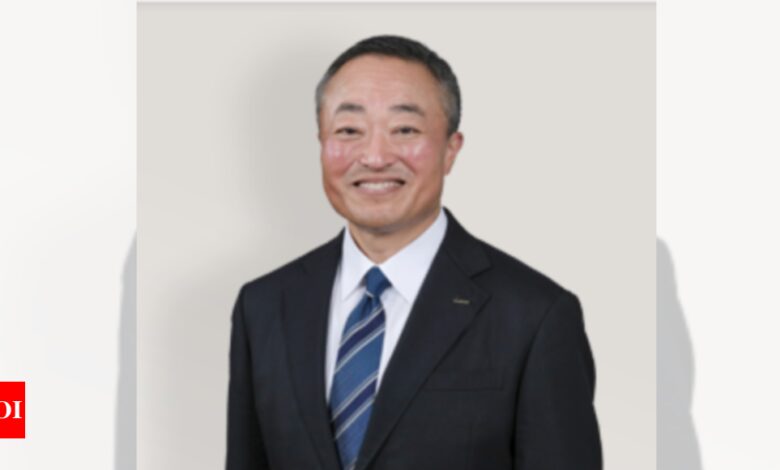India a country with most business potential: Japanese printing giant Fujifilm

“It’s a well known fact that India is a very populous country, where the GDP has also been showing steady growth.From that perspective, I do believe that India is probably the country with the most potential in the world,” Naoki Hama, Global president & CEO of Fujifilm’s Business Innovation Corp, told TOI here.
The Business Innovation division provides multifunction printers to businesses of various sizes — from large to small-and-medium to help address business challenges related to documents and communications. It was initially established as a joint venture with Xerox, but later became a fully-owned Japanese company after Xerox’s share was acquired a few years back. While the JV had placed restrictions on Fujifilm to have direct operations in India and some other markets previously, this condition was withdrawn once it had full control.
This saw the company start business in India from April 2021, but only with printers and machines which are imported here. The office-related products are made in Vietnam, while the commercial printers, also known as the graphics communication business, are made in Japan.
Asked whether the company plans to Make in India, Hama said there are no specific plans. “Regarding Make in India, we currently have no specific plans for manufacturing locations. However, India’s appeal as a market is undeniable, and we will monitor our sales growth in the region. India also serves as a gateway to Africa, enhancing its strategic importance.”
On whether the company plans to have R&D and innovation set-up here, he said while some work is already being outsourced to India, more engagements can be considered. “At present, we engage in offshore activities, leveraging development support provided by Indian companies for IT and solution development. We already offshore some of our software development through these means. Additionally, one of our associated companies has established an HR department in India, deploying Indian software engineers for support. Depending on the circumstances, they may work with us in Australia. Cooperation from our Indian partners is vital for our expansion efforts.”
Excerpts from the interview:
TOI: India and Japan are very good friends as countries. But India is also a very rapidly growing economy. How do you look at India as a potential market for printing companies?
Naoki Hama:
It’s a well-known fact that India is a very populous country. And as you also rightly mentioned that the GDP has been showing steady growth. So from that perspective, I do believe that India is probably the country with the most potential in the world.
So, I would say primarily for us India has two points of attraction – one of course goes without saying that it’s a very large market, it is a market that is also growing. Other than that, it’s the human resource, the talent pool that India possesses, you know, we will need the cooperation and support that is offered by the Indian human resource talent.
And that is going to be very important as we expand our business over here. So, this is something we not only have expectations of, but also look forward to as we grow in India.
TOI:
It is a really competitive market with companies like Canon, HP etc. already making their presence felt. How do you see yourself making inroads here? Because it’s tough to segregate distribution supply chain servicing?
Naoki Hama:
We would like to bring very specialized products into the Indian market, we have to bring products that make the Indian consumer happy and also to be able to contribute in some way to their life. I believe that the Indian consumer, for example, is very fond of photographs. I believe that business potential is very big, and we want to make sure that if your consumer wants to see a print of their photographs, they should be very, very high quality. So, we started with high-end machines that are good for high-end printing. So, this is firstly what we started in India.
TOI: As you mentioned, people prefer printouts of their pictures. In India, weddings are a significant business, with people collectively spending millions of dollars. Alongside weddings, photography plays a crucial role. What are the other areas besides weddings that could stimulate business growth for you in India? On the consumer side, not B2B.
Naoki Hama:
So, returning to commercial printing, honestly, the demand for it is diminishing in certain sectors. What used to be considered commercial printing before is now transitioning to digitization. We’ve observed that the proportion of digitization currently stands at 10%, and we anticipate this trend will continue to grow. Therefore, in our approach to commercial printing, we have chosen to introduce high-end printing machines to India.
Typically, there are four primary colors, or let’s say five primary colors, provided in our printers. However, the product we have introduced in India utilizes six primary colors, significantly expanding the possibilities of permutations and combinations. Our aim is to bring high-end products into the commercial printing industry.
TOI: Across the world, there are concerns about sustainability. Everybody wants to conserve paper. You’re talking about printing that uses more and more paper. Also, are you concerned that more and more people are going digital now and that most offices are working on hybrid mode. This means that printers are not being used as much as they used to before. Does it make the printing business very challenging going forward?
Naoki Hama:
Your observation is absolutely right. And I think everything has accelerated, especially during and after COVID. As you know, the workstyle has undergone a lot of change, and people have become very conscious about trying not to use paper and not taking out that many printouts either. So, yes, the situation and the conditions have changed.
From that perspective, I’d like to also inform you that less than 70% of our turnover or revenues come from printers, which we actually call multifunction printers, and more than 30% comes from service and solutions. We do have a business plan henceforth to increase the proportion of revenue from services and solutions.
One more thing to add here is I believe that the positioning of what is called a multifunction printer has changed over time, and we will need to make sure that our machines, the products that we manufacture, are conscious of this new positioning of the product. Just to give you an example of how we are trying to be conscious of the changing position of printers, etc., traditionally these multifunction printers had two jobs: they would either take a photocopy or print out, that was mainly the situation.
However, today multifunction printers have evolved into being the entry and exit points for providing various services and solutions. A very simple basic example of that is that one of the activities that has been carried out in our efforts to digitize is that something that was physically available, like paper, is scanned and turned into digital data, right? So this is, in a sense, an entry point of providing further solutions. We believe that we have to now look at these multifunction printers as a part of the solution and services business. As such, it is one part of the solution and services. And we accordingly design our product keeping in mind that.
TOI:
Cloud and data security are crucial aspects of cybersecurity because once you are conducting scans, the data must be stored on the cloud, which then raises cybersecurity concerns. So, I’m sure those are the areas you’ll be focusing on?
Naoki Hama:
Yes, we are indeed undertaking such tasks. What we are doing involves setting up the IT environment for our customers in Japan. Additionally, we assure the security of their office environment. For this purpose, we handle tasks such as configuring PC settings, among others.
Moreover, we have a joint venture company in Japan that manages cloud data. These are the services we already provide in Japan. Thus, in that sense, we are moving towards expanding or evolving into a company that looks beyond capturing data. Hopefully, someday we will be able to offer similar services in India as well.
TOI: You mentioned the need to have more people from India working on innovation. That is one aspect for which you would be hiring people in India for R&D for innovation. Part two is about ‘Make in India’. Prime Minister Modi has always spoken about companies coming to India, making in India, for supply to India, and for exports to other countries. Because the government is giving a lot of benefits to companies to manufacture here. So first, would you be hiring people for R&D and innovation? And secondly, would you now at least start exploratory work on putting up a factory in India for making printers and other kinds of solutions, making some investments over here as well?
Firstly, I’d like to address whether we are pursuing innovation in India. At present, we engage in offshore activities, leveraging development support provided by Indian companies for IT and solution development. We already offshore some of our software development through these means. Additionally, one of our associated companies has established an HR department in India, deploying Indian software engineers for support. Depending on the circumstances, they may work with us in Australia. Cooperation from our Indian partners is vital for our expansion efforts.
Regarding “Make in India,” we currently have no specific plans for manufacturing locations. However, India’s appeal as a market is undeniable, and we will monitor our sales growth in the region. India also serves as a gateway to Africa, enhancing its strategic importance.
Our commitment to environmental consciousness sets us apart. We endeavor to implement similar eco-friendly practices in India. In terms of environmental initiatives, we engage in two types of business. One involves refurbishing old machines for reuse, while the other entails complete dismantling, with 86% of parts reused and 14% replaced with new ones. This latter approach, particularly reusing mostly new parts, showcases our dedication to sustainable practices. We have implemented these initiatives in Japan and hope to introduce them to the Indian market, given the close ties between our nations.
TOI: Regarding hirings in India, especially concerning technology and innovation, the establishment of the technology sector in India, and secondly, when you mentioned the factory, once the business grows, have you started any kind of work on that, identifying how much sense it makes and how much sense it does not make? What kind of investment will come in?
Naoki Hama:
So honestly, we do not have anything specific yet. I have no direct answer to your question. That said, you know, once you enter India, I do have something deep inside, in the back of my mind. I know that I must have that concept in my head. And you know, I hope that very soon there will be a time when I will start thinking specifically along those lines.
Q Just one clarification: Which market are we getting the products from and where do you make them?
The office-related products are made in Vietnam, while the commercial printers, also known as the graphics communication business, are made in Japan.
#India #country #business #potential #Japanese #printing #giant #Fujifilm





